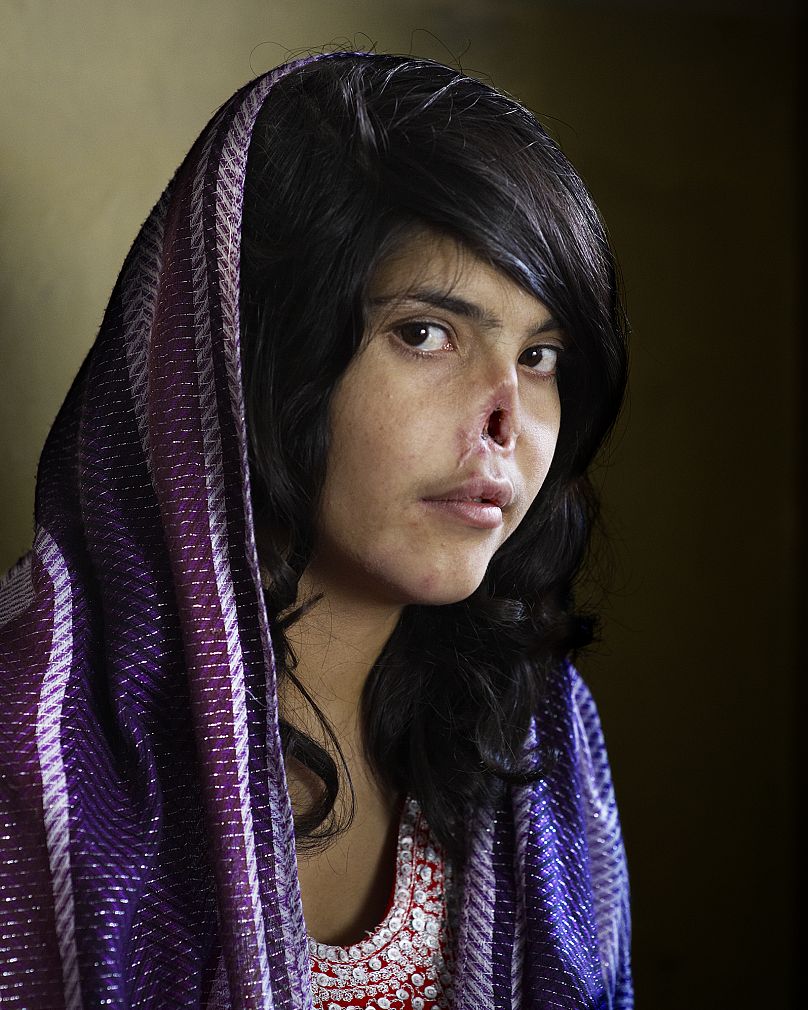The 2010 winner, South African Jodi Bieber, acknowledges that the photojournalism industry is male-dominated.
Jodi Bieber, born in Johannesburg, South Africa, won the most prestigious prize in the world of photography in 2010 — the World Press Photo of the Year.
Her winning photograph was a striking portrait of Bibi Aisha, a young Afghan woman mutilated by her husband after trying to flee her home.
Yet Bieber is one of only four women who have won the award in its 64-year history.
Françoise Demulder (France) in 1977, Dayna Smith (United States) in 1999, and Lara Jo Regan (United States) in 2001 are the only other women to achieve this milestone in their careers.
"Seriously? That is incredible!" Bieber said at in an interview with Euronews.
She said that being awarded the World Press Photo of the Year was one of the highlights of her career, not only winning the prize but also because it meant she travelled to around 20 countries to tell the story behind Bibi Aisha's photograph and talk about her other projects.
“For a year I put down my camera and it was all about communicating about my work,” said Bieber, adding this brought her "great personal growth."
However, few female photographers have had the same opportunity. She acknowledges that the photojournalism industry is a very male-dominated world and "quite conservative".
"It is an industry that has existed for many decades, different to artistic photography, which is a more modern world," she said.
What is more, Bieber explained that her profession is not always easy economically and, at a certain age, many women have to make "concessions and sacrifices," mainly for their families, something that might lead them to leave photography.
However, she emphasized that the situation is changing and that more and more women try to reconcile the travel necessary for their work with their private life.
Bieber added that the lack of female winners in competitions such as World Press Photo of the Year does not come from an absence of women doing the job, but rather an abundance of men running contests, awards and festivals.
The story behind Bibi Aisha's portrait
Bieber did not expect to win the coveted prize with this photograph.
"I did not think it was going to be selected. Portraits were not chosen as much at the time and much less portraits of this kind," she told Euronews.
It was published in TIME magazine, part of a set of portraits depicting Afghan women for its August 2010 edition.
"In 2009, Bibi Aisha, an 18-year-old girl from Oruzgan Province in southern Afghanistan, fled her husband's house, where she suffered beatings and ill-treatment. She was given to her husband when she was 12, as payment to resolve a dispute," Bieber said.
Having endured six years of torment and abuse, she escaped to the only place she could — to her family's home.
It was here that the members of the tribal court arrived one night and demanded that the girl be handed over.
They took her to a clearing on a mountain where the local commander issued his verdict.
She was then held by her brother-in-law while her husband first cut off her ears and then her nose. Aisha fainted from the pain but soon woke up covered in her own blood.
With the help of the US army, humanitarian workers took her to a women's shelter in Kabul, run by an Afghan-American organization, Women for Afghan Women (WAW), where she stayed until August 2010.
Bieber was aware that the young woman was suffering from post-traumatic stress and did not want to force her to explain her story during the photo shoot.
"During the session, I lowered my camera and told Aisha that I can't imagine how it must have felt to be treated so brutally," she said.
"I asked her if we could work together to show her inner strength, her inner beauty, her power ... She looked at the camera and that's when I took this picture," Bieber explained.
Aisha's face has been rebuilt and she lives with an Afghan-American family in the United States.












